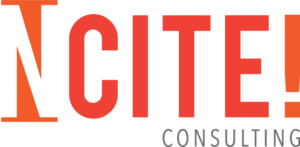Nonprofit budgeting isn’t the most eye-catching topic. Many of us were raised to avoid conversations around money, and we’ve carried that logic into the professional world. Because in the nonprofit sector, our focus is people, and not profit, conversations around money are even more difficult to have.
But they’re still necessary.
Nonprofit organizations need to be comfortable talking about financials and budgeting. These honest conversations are how we evaluate programs, predict upcoming costs, determine staff raises, determine staff salaries and much more. In short, we need to know how to budget. Here are some nonprofit budgeting best practices I’d recommend:
-
Track & Predict Expenses
Organizations with several years under their belt should have an idea of their annual expenses. After years of operating in their community, these nonprofits should know when certain expenses will occur or change. For example, if a nonprofit manages a food bank throughout the year, and a shelter during the winter whose meals are provided by the food bank, administrators should expect food costs to increase in the late fall or early winter.
Younger organizations won’t have all the data to pull from but can still gauge their annual costs. For example, many CRM subscriptions are renewed on an annual basis meaning they renew at the same time each year. Note this on your calendar, and set a reminder a year in advance. -
Leave Room for Surprises
I’m not sure who it was that said we should “expect the unexpected” but they really had something going when they thought of this one. Any nonprofit is subject to internal and external factors that could impact the organization’s income. In some cases, an entire industry will be affected by a single external factor such as a global pandemic. Sound familiar?
As we all know, in 2020, when COVID-19 hit, most nonprofits were not ready and had to reshift their resources to best respond to this unexpected event. For some organizations, this looked like redirecting donors to more health-based programs or a sudden decrease in donors’ financial support for art programs. Whatever the case, nonprofit financials were impacted across the board. -
Think Long-Term When Making Purchases
When it comes to nonprofit budgeting, sometimes the more expensive upfront option is better than the cheaper alternative. It’s true the cheaper purchase might seem appealing in the beginning. However, if this selection leads to additional purchases of the same item or service, in the long run, it’s likely the cheap option will cost you more money and energy.
Consider the bane of any office worker’s existence: the office printer. Sure, initially when shopping for printers, a nonprofit might look at its budget and decide Option B (the cheaper option) is best. This printer does the basics well, and that’s it. Option A (the more expensive alternative) has the bells and whistles along with the basics. You choose Option B but six months post-purchase the printer has broken down several times, scans aren’t sending properly and the settings don’t adjust to different page lengths. Ask yourself how much did you really end up paying?
Then consider how much more of that time and energy could have gone towards your larger mission.
-
Review Frequently
Many organizations use monthly board or weekly staff meetings to review the budget. How often works for your team is best, but I recommend looking over the budget at least once a month. Because most bills are paid on a monthly basis, reviewing your organization’s budget before and after those large expenses have been accounted for is a best practice.
Also, many nonprofits have monthly donors. Reviewing your budget every month gives those monthly donations a chance to arrive, and provides a good idea of where you all stand for the upcoming month.
If you’re interested in learning more about board management, schedule a free 30-minute consultation with me to see how we can work together.


